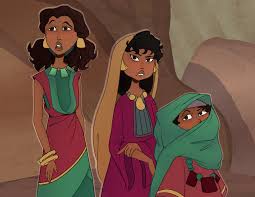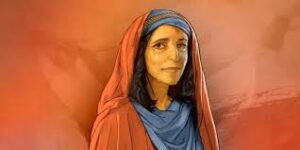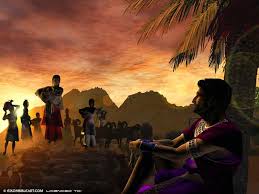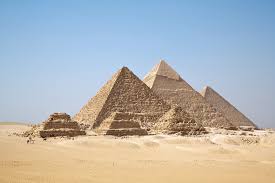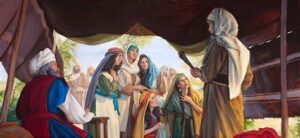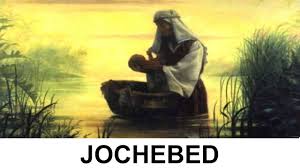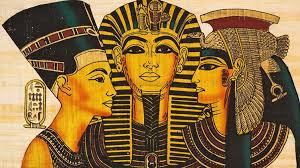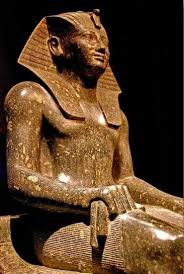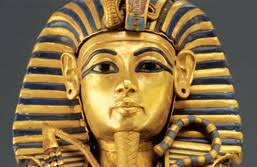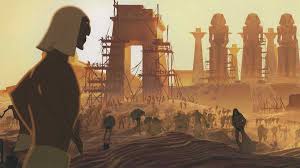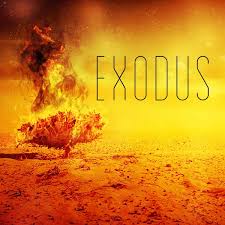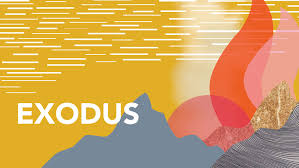Ah – So God Was Kind to the Midwives 1: 15-22
So God Was Kind to the Midwives
1: 15-22
So God was kind to the Midwives DIG: What did Pharaoh’s fear lead him to do? What did the midwives fear lead them to do? By disobeying Pharaoh, what were the midwives risking? What did God think of their disobedience? Compare the accounts of how the seed of the Serpent tried to kill both Moses and Jesus (Matthew 2:1-20).
REFLECT: If you were a Hebrew midwife, what do you think you would have done? How were their actions justified in light of what the B’rit Chadashah teaches us about submission to authorities (Romans 13:1)? Why did God bless them?
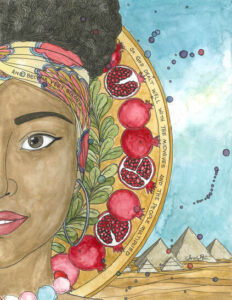
When working the Hebrews ruthlessly didn’t stop them from multiplying, Ahmose put a second phase of his plan to work. Then the king of Egypt said to the two chief Hebrew midwives, whose names were Shiphrah and Puah. Judging from the names of these two midwives, they were probably of Hyksos origin. The name Shiphrah means beautiful, like Linda in Spanish. And Puah can also be a Semitic name. They were told, “When you help the Hebrew women in childbirth and observe them on the delivery stool, if it is a boy, kill him; but if it is a girl, let her live” (1:15-16). The rabbis teach that Pharaoh, warned by his astrologers, schemed to safeguard himself against the birth of a child who might become the deliverer of the Israelites. Art by Sarah Beth Baca: see more information on Links and Resources.
Under biblical and ancient law, nationality was determined by father and not by the mother. So we can see why the daughters were allowed to live and the sons had to die. If your father was a Hebrew, you were a Hebrew regardless of what you mother’s nationality was. If your father was an Egyptian, you were an Egyptian regardless of what you mother’s nationality was. So by killing off the sons, the Hebrew population would be decreased because the daughters could be forced to intermarry with the Egyptians, and any subsequent children would be Egyptian because their fathers would be Egyptian. But this plan failed as well.
If Pharaoh’s command to the midwives had been carried out, it would have been a master stroke. The midwives, however, feared God and did not do what the king of Egypt had told them to do. They let the boys live (1:17). They feared God more than they feared Pharaoh. They committed themselves to obey His will rather than Pharaoh’s and allowed the boy babies to remain alive.9 This is one of the major themes of Exodus. Who were the Hebrews to serve – God or Pharaoh?
Pharaoh’s plan for Isra’el and God’s plan for Isra’el were exact opposites. Pharaoh’s plan for them was slavery, sorrow, poverty and death, while God’s plan for them was liberty, joy, plenty and life. A great contrast, for sure, but that is just the wide difference between Satan’s plan and God’s plan for every human soul. For the wages of sin is death, but the gift of God is eternal life in Jesus Christ our Lord (Romans 6:23a).10
It was obvious that his plan was not working, so the king of Egypt summoned the midwives and asked them, “Why have you done this? Why have you let the boys live” (1:18)? Their response was not completely truthful, but they honored God before man. The midwives answered Pharaoh saying: Hebrew women are not like Egyptian women; they are vagarious and give birth before the midwives arrive (1:19). The question arises, is it ever proper to lie in a situation like this? There are times when believers are faced with this issue. For example, believers were faced with this situation during the Second World War when they had Jews hidden in their homes. The Dutch believers reacted differently than the Polish believers. When the Nazi’s came and asked the Poles if they knew where the Jews were hiding, they felt like they could not lie and they exposed the Jews sending them to their deaths in the Nazi gas chambers. But when the Dutch believers, including Corrie ten Boom, were asked the same question, they avoided the truth, saving Jewish lives. What would you do?
In the same manner, the Hebrew midwives saved families through disobedience to Pharaoh, so God rewarded them with families for their obedience to Him. So God was kind to the midwives and the people increased and became even more numerous. God protected them from Pharaoh’s wrath, and He gave them a reward. And because the midwives feared God, He gave them families of their own (1:20-21). The end result was that the Israelites continued to multiply in strength and numbers.
The rabbis teach that according to the Talmud (commentaries on the TaNaKh), Pharaoh’s astrologers warned him that a savior was about to be born. Thus, Pharaoh attempted to kill Moses as a baby. Thereafter, Pharaoh put the third phase of his sinister plan into operation. Totally frustrated and angry, Pharaoh gave this order to all the people of Egypt saying: Every Hebrew boy that is born you must throw into the Nile, but let every girl live (1:22). Genocide, the killing off of an entire ethnic population, was Pharaoh’s solution to his problem. In a chillingly similar modern situation, Adolph Hitler called the same procedure the final solution.11 But just as Satan tried to get rid of the children of Isra’el, God intervened and one in Pharaoh’s own household would draw a deliverer, Moses, out of the Nile.
Today we are obligated to obey YHVH before men. For example, if a government commanded that no one was allowed to present the gospel to others, believers in that country would have to disobey because Christ commands us to witness for Him (Matthew 28:19-20). Such was the response of the disciples in Acts 5. If a government ordered mandatory abortions for its people, believers would have a duty to resist. God will not tolerate His people committing murder (Exodus 20:13). This is a general principle for how a believer is to live: it is to be on the basis of God’s word.12



